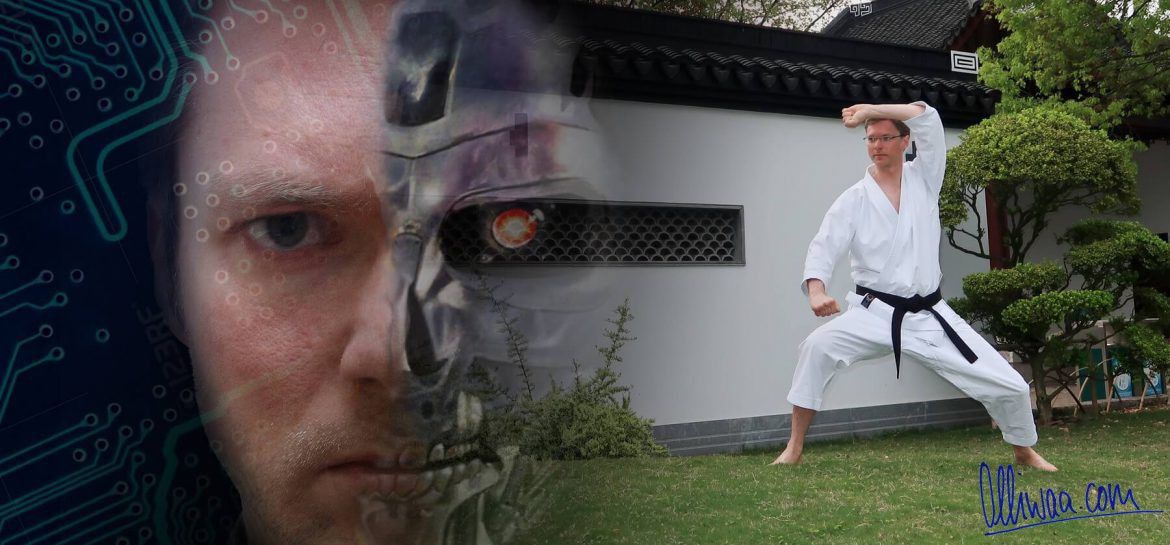
Do you suffer from osteoarthritis, have an artificial joint – or would you like to prevent both? Then Welcome!
Deutsche Version siehe hier / German version see here
Karate (actually) prohibited!
If you look at sports that are “allowed” with an artificial hip, martial arts like Karate or Judo always end up in last place. In other words, from a medical point of view they are virtually forbidden.
WHY?
In these contact sports, great forces act on the joints, leading to high wear.
Stomping steps, kicks, explosive direction changes, shear forces, falling, wrong technique execution… – are poison in the long run!
Let’s face it: does it really make a big difference, if with or without prosthesis?
If you constantly go full throttle with your car, step on the brake like crazy or play “Tokyo Drift”, it’s busted quickly. Simple as that.
So there are two possibilities:
- If you still have your original joints, they will at some point be destroyed, you get osteoarthritis and need a replacement!
- If you already have artificial joints, they will wear out faster and have to be exchanged earlier.
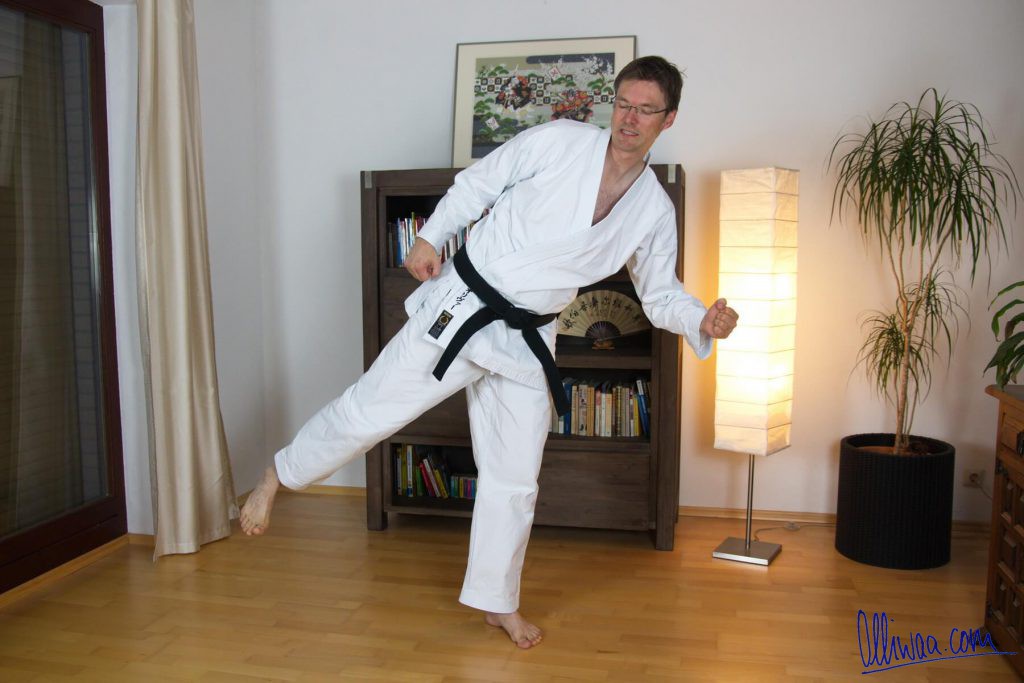
THAT IS FRUSTRATING!
If you are a passionate Karate-ka like me and have already invested decades of blood, sweat and tears, the diagnosis of osteoarthritis is devastating. But wait,
NO PANIC!
If you pay attention to a few things that I will share with you in a minute, you may continue happily – perhaps until you no longer need any joints.
But before that, allow me a few words, why this text is actually in-front of you right now.
Why this blog article?
25 years of Karate, early 40s and since 2016 an artificial hip: for me it will have been a combination of different leg lengths, a pre-injury, sub-optimal nutrition and (wrong?) Karate, why my hip was worn out at a young age.
Discussing own health issues in public is usually not my thing. I’ll do it anyway now, for three reasons:
1 – Before the surgery, I would have liked more information for myself. My question back then: How can I practice Karate with an artificial hip and what should I pay attention to? If Karate is for everyone, as it is always said, then it should also be for prosthetic fighters, shouldn’t it…?!
2 – Chances are that I’m not alone on the planet with this problem. Perhaps you yourself have recently been thrown off track by the diagnosis of hip osteoarthritis? Then it is my mission to encourage and help you.
3 – I’d like to help those of you, who are still in lucky possession of their original parts, to keep them. Osteoarthritis is no fun! A decade of permanent pain and increasing restriction of mobility; and finally, having someone cut through your leg with a saw, in order to hammer in a ceramic-metal replacement, is not cool.
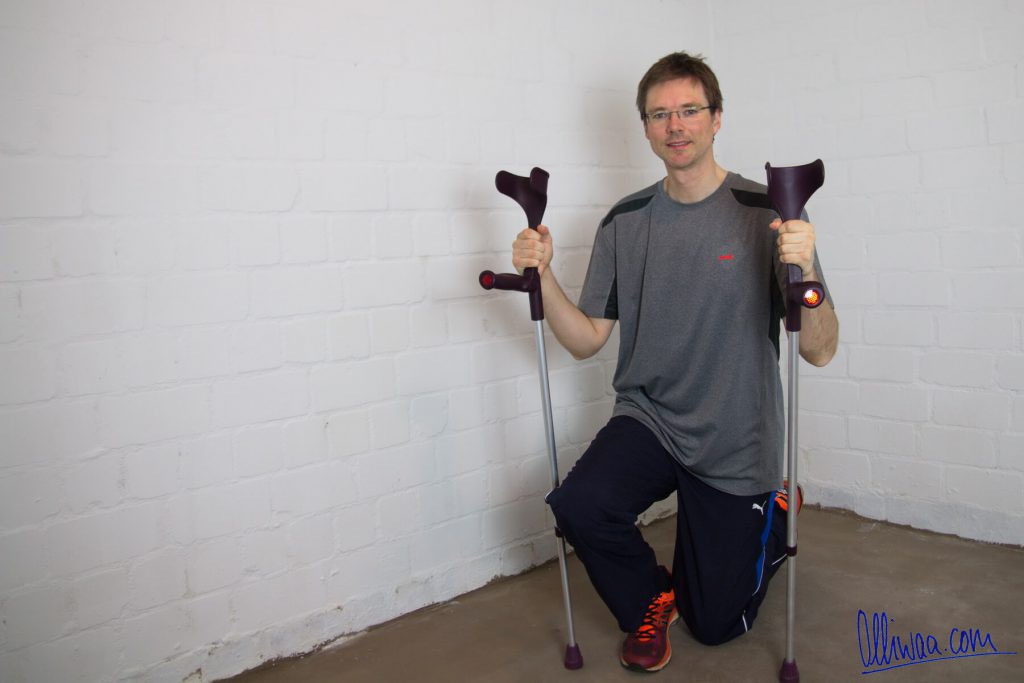
But we shall not despair! Let’s start a new style together. Now that we are “half human, half machine”, it makes perfect sense:
Saibōgu Karate – Cyborg Karate!
For risks and side effects…
BEWARE!
Neither am I medically trained, nor can any statements made here be considered universally valid. It would be foolish to say so.
My advice is not a substitute for medical expertise! All tips are based on own experiences and are subject to change. What works for me, does not necessarily have to be suitable for you and vice versa.
Many factors such as age, constitution, quality of materials, rehab, willpower, etc., significantly affect how well or poorly you can live and train with your prosthesis.
I know of people who are not as satisfied with the result of the operation as I am. However, many of them are much older, move less and do not do daily stretching and strengthening exercises.
An artificial hip is a foreign object inside you. It does not last forever and is worn out after about 15-20 years. It is quite possible that the price for Karate is an even shorter lifespan of the joint – unless you completely change to Tai Chi Kumite and Qi Gong Kata.
サイボーグ空手 – Cyborg Karate
Spoiler alert: Karate is very well possible with an artificial hip!
Already on the same (!) day after the operation I was allowed to get up and fully load the treated leg. At first I could only move to the toilet with a walker and under supervision. However, on the next day I was handed crutches and started training.
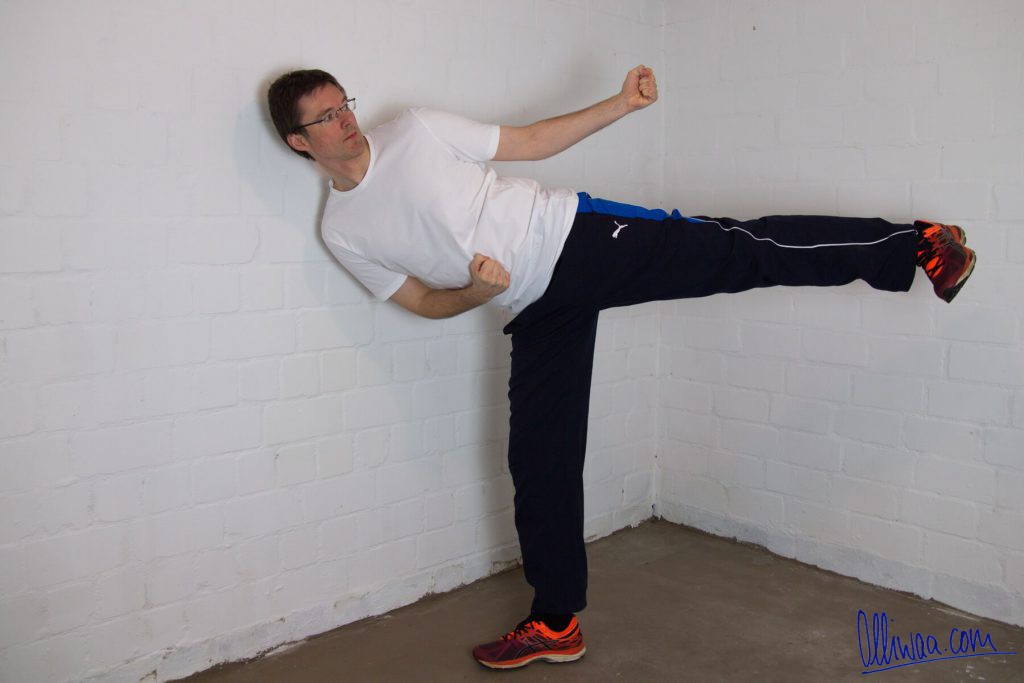
I will not forget the caretaker’s astonished face as I balanced on the operated (!) leg and put on a sock on the other side. I assured him: that’s Karate …
Here now my eight tips for you:
1. Listen to your body
This might sound too simple, but your body does know best what is good for you and what isn’t. You just have to listen carefully!
Whenever an exercise causes you pain or you feel that the strain is getting too big, slow down or stop!
It can at times be that you are feeling really well and in all excitement you totally forget your artificial joint. It happens to me all the time and that’s somehow fantastic. Kicking high and fast, going with the flow – awesome! The downside is, the bill will follow later with high certainty. In my case, it’s a kind of phantom pain that kicks in right after training whenever I overdid it again. A clear warning sign!
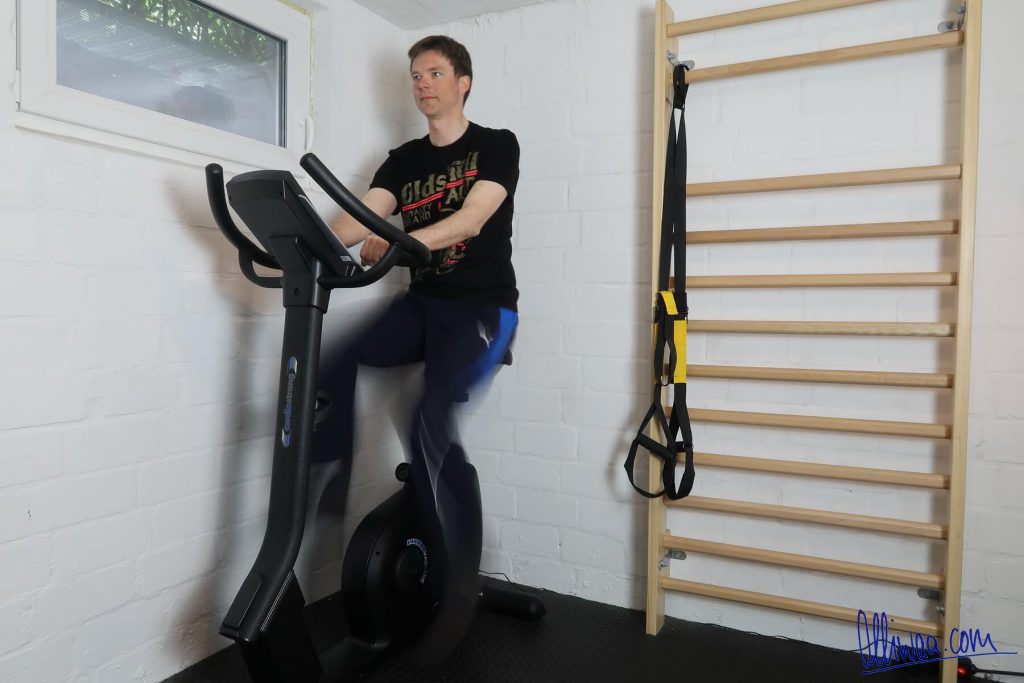
The good news is: at some point you instinctively know when it’s time to stop or slow down. For example, during seminars with multiple units.
My advice: Do whatever your body tells you to do, even if it’s mentally challenging. Watching how fast and dynamic the others are does hurt if you can’t follow along. But it’s about YOUR health!
This artificial brake is the hardest exercise. And it’s the most important!
2. Prefer flowing movements
Whenever possible, replace abrupt, hard and explosive techniques with round and smooth movements. Ideal are fluid motions with little impact.
These generally include walking, cycling (ergometer), swimming, rowing (rowing machine), Tai Chi, Qi Gong, gentle yoga, …
There are countless possibilities for Karate, too. Here are some examples:
- Tai Chi Karate – Kata, Kihon, Kumite in slow motion
- Kick slower and more consciously
- Restrict kicks to the lower target area (Gedan)
- Adapt all techniques, levels, heights and speeds to YOUR body
- Focus on hand and arm techniques (if you have knee or hip prosthesis)
- Replace jumps in Kata by conscious steps (i.e. simulate the jump)
- …
Your Karate might even become better in this way than ever before! Exercising slowly, softly and relaxed reinforces correct, economical movements and promotes a good balance. At high speed, errors can be covered up, which is not possible when you do each technique slowly.
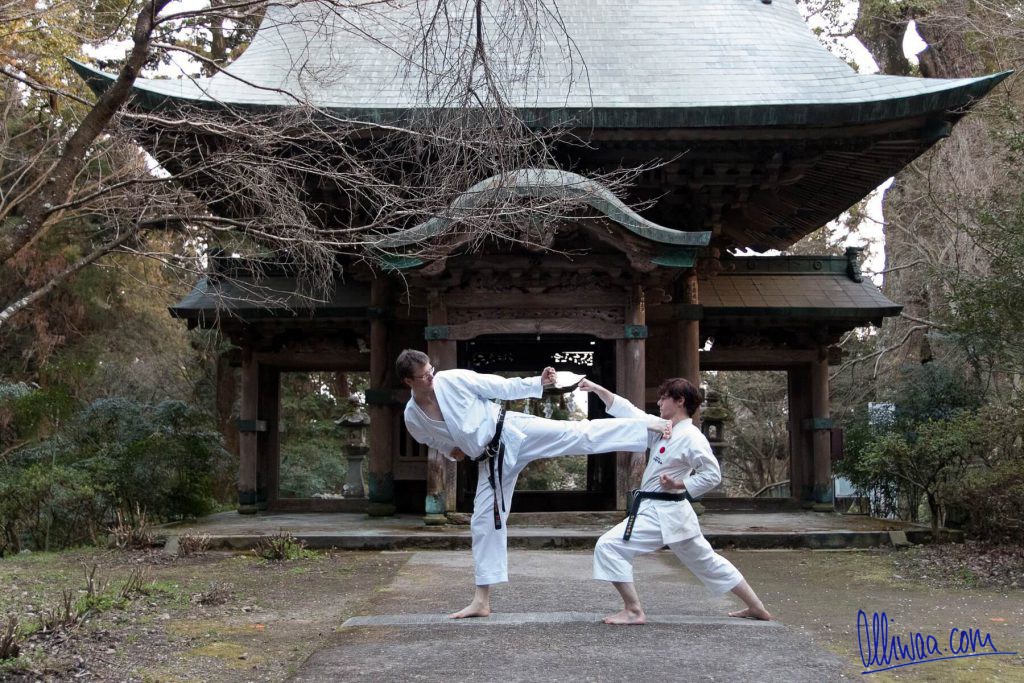
Alright, I admit it…
… oftentimes I simply cannot refrain from going full on and full speed. On these occasions I totally neglect all of those tips and good behaviours that I am preaching you right now. And it does work! Not always, but quite often. And it just feels so good.
However, some of the exercises we did in the past make me shiver today. These Knee-Killer-Joint-Destroyer routines are taboo now. Neither would I do them when even the most famous and highest ranking grandmaster asked me to, nor would I teach them.
3. Avoid jumps, kicks and falls
The reasons why jumps, kicks and falls should be avoided have already been mentioned earlier. They are poison, because excessive forces act on the joints!
Jumps, as they frequently occur in various Kata should be replaced with movements in which you slowly reach the next position. You might consider simulating the jump by lifting and placing one leg at a time. It may look strange, but hey! A jumping Cyborg? Leave that ridiculous hopping to small humans in Kindergarten 😉
Kicks of any kind are generally possible, sometimes even fast and super-fast! But then please without impact. Trying to hit a sandbag or an opponent is tempting when your mobility returns after surgery. But it shortens the life-span of the prosthesis and increases the risk of loosening it. In worst case it might even cause a fracture of the joint or the bone structure around it. Why not try kicking with a Terra-band? One end on the ankle, the other in your hand. So you can simulate resistance and strengthen your leg muscles, without affecting the hips with big impact.
Falling, especially onto your artificial hip, should remain the exception. In self-defense situations and Kata Bunkai it is sometimes hard to avoid. From my experience a few take-downs are alright, as long as my training partner helps me to go down gently, i.e. by holding me whilst falling.
4. Say that you have a prosthesis
When meeting new training partners (for example in seminars), I inform them about my prosthesis and that I will do certain exercises only gently, if at all.
Up until now, this has never caused any issue. If at any point in the future, this should be the case: bye-bye training partner!
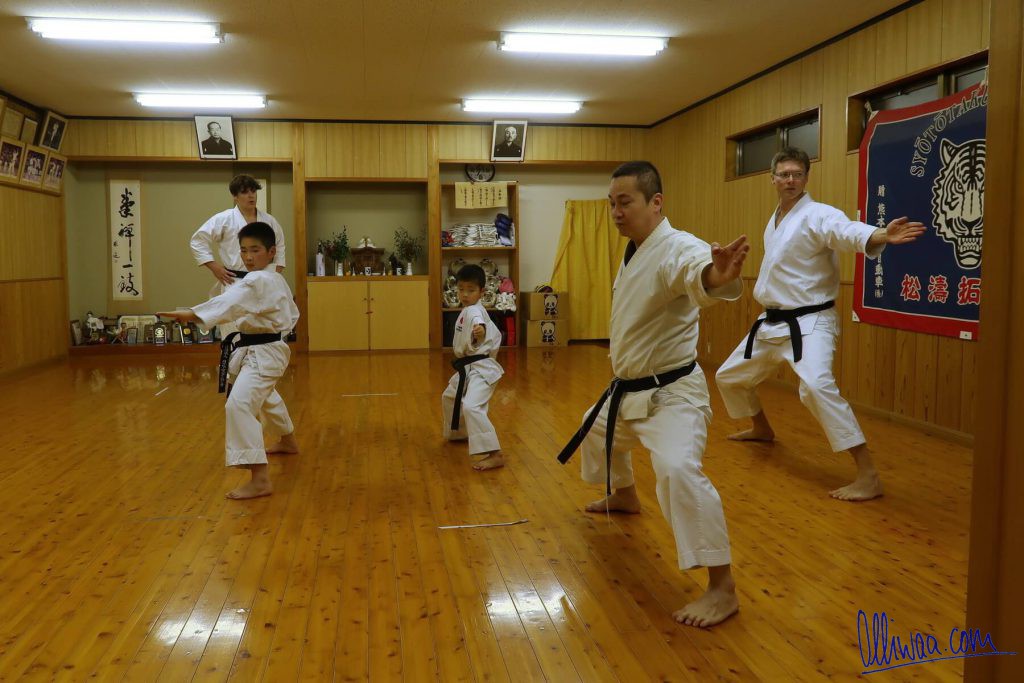
As long as you are not the boss yourself, it is important that your sensei knows about your limitation.
Also, in case you wish to be tested for your next Kyu or Dan grade, make sure to inform the examiners early. Unless they already know you it is the only way for them to adapt the grading to your physical ability! I once failed a Dan Shinsa, mainly because I told the examiners too late. They did not know how to handle the situation on such short notice – so they tested the standard program, which I simply could not fulfill.
5. Train less hard (but more often)
My Karate teacher in China advised me as early as 2002 to do light exercises – every day. An example: stand closely in-front of a wall and kick it with the ball of your foot for one hundred times. VERY lightly! That is not terribly spectacular, but in the long run it will strengthen you without straining. That’s how real Kung Fu masters would train, I was assured.
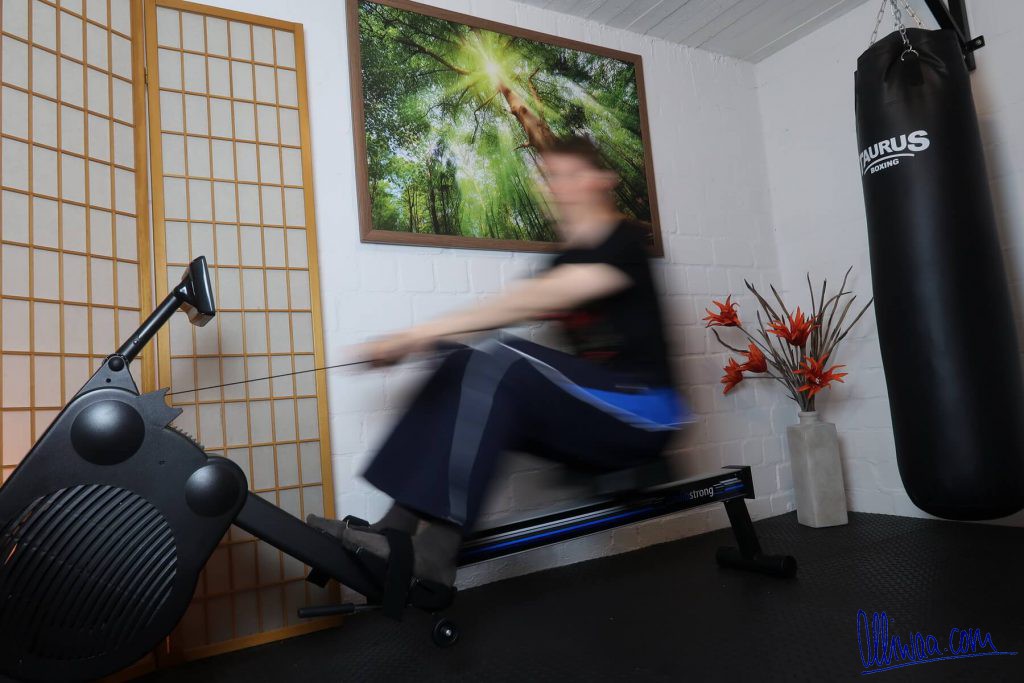
Further exercises I do regularly to stay or become fit despite my limitations:
- Gentle stretching and mobilization exercises (daily)
- Walking 10,000 steps (almost daily)
- Some Karate self-training (almost daily)
- Stationary bike and rowing machine (3 times a week)
- Hitting the Punching bag – no kicks! (1-2 times a week)
- Terra-band exercises (in the office)
- Physiotherapy exercises (they helped shortly after the operation and are still excellent)
Paradoxically, I’ve become fitter and healthier than ever before in my life and have lost a few pounds. Something I could have had much sooner. But that’s how it is …
6. Strive for a balanced diet
“An Apple a day keeps the doctor away” – what if that was true?
Some claim that arthritis is not an age disease, but the result of decades of improper nutrition. Too fatty, too salty, too sweet – make the body sour. To counter-balance the acid, the body would attack its own bone and joint substance. That would be the true root cause, so the controversial claim. The magic word of the antidote here is Alkaline Diet.
Whatever your philosophy, a balanced diet will certainly not harm you. It is undisputed that every kilo or pound less relieves your joints.
A good starting point is the food pyramid.
7. Use Natural Painkillers (MSM)
Because of my age, the doctors advised me to postpone surgery for as long as possible. Why? if an artificial joint lasts 15-20 years, I would accordingly have to get follow-up hip replacements more often than someone who is today 60 years old. For me this resulted in one decade of increasing pain.
But I didn’t want to take painkillers permanently. These have their value in combating acute inflammation and provide quick relief from severe pain. As a permanent solution they were no option due to their ugly side effects.
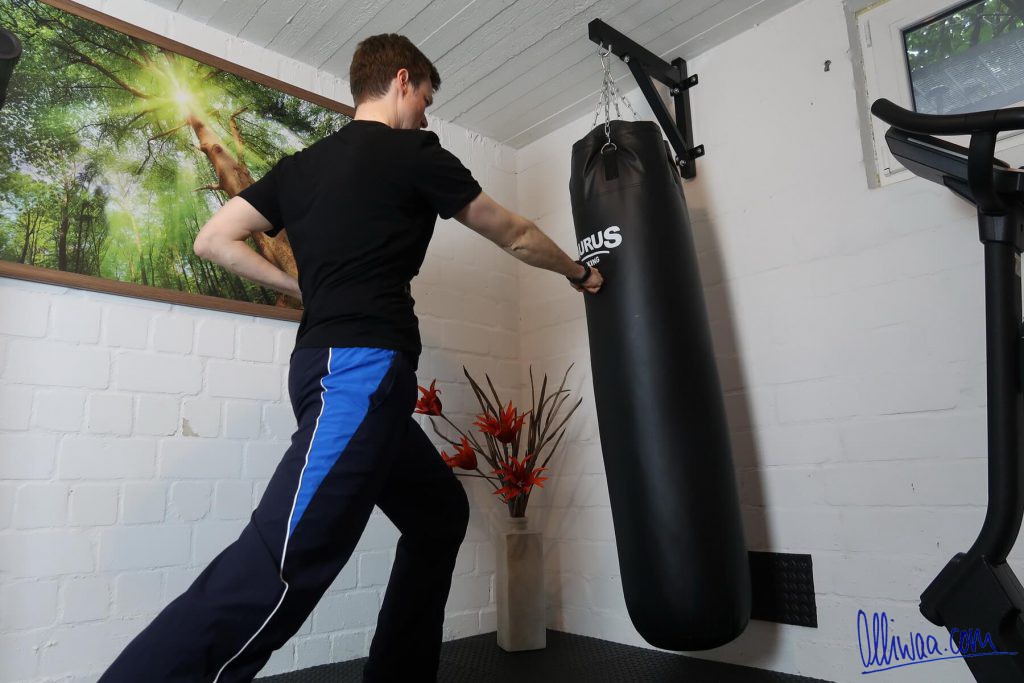
In the search for alternatives, I came across a powder with a weird name:
METHYL-SULFONYL-METHANE – In short: MSM.
MSM is a side-product of paper production. Yes, you read that right – a white powder from the paper factory!
To make a long story short, I gave it a try and it dramatically improved my life for many years. And I continue to use it to this day, even long after surgery. If interested I invite you to do a little research on MSM. The product that I have been taking for many years is this one.
8. Keep calm and Karate on
Osteoarthritis is not the end of the world. It’s nothing compared to other diseases! A hip operation today is no longer rocket science and usually takes half an hour. The materials are getting better and more durable.
Long gone are the days when you had to stay in hospital bed for two weeks after surgery. Today you get up on the same or the next day and walk!
This also means for you that you can continue to practice Karate and enjoy the fascinating path of this martial art.
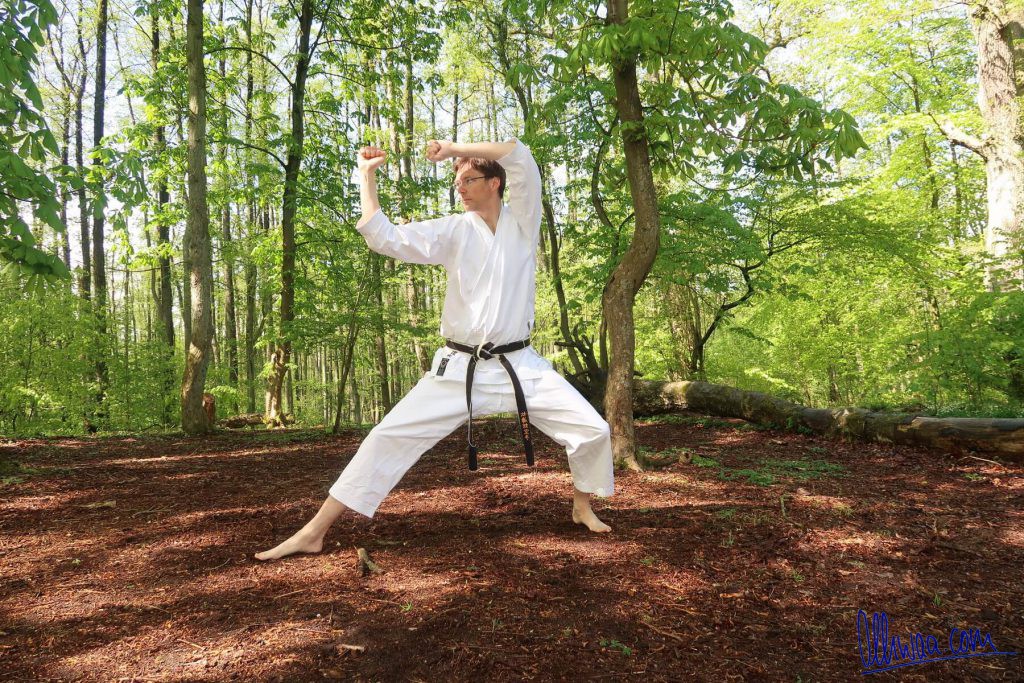
But I also want to be honest with you and refrain from telling you fairy tales:
Be prepared to slow down and adjust your training.
The mobility re-gained from the hip replacement is a dream. Being pain free is beyond description and Karate practice is pure fun again.
However, certain moves still hurt. Sometimes a lot. And:
Many things cannot be done anymore. Hard kicks, full on Kumite, explosive moves – we already talked about it. It’s over!
It can be frustrating having to force yourself to step on the brake.
And it is also an opportunity to break new ground.
Karate offers so many opportunities, beyond the beaten track. Why not combine your training with Tai Chi? In our club, we have a Chinese Tai Chi master, who once fought a full contact Thai-boxer, just for fun. Guess who always won…
Further learning opportunities:
- Kyushu Jitsu (Vital Point Techniques)
- Weapon-Karate (Kobudo)
- Other styles
- Your own (Cyborg) style
- Sport-science
- Philosophy and history of Karate
… and of course you can pass on your knowledge to others and enjoy the progression of your students. The beauty of this is you can train as much as you like, then rest and watch your Karate kids exhaust themselves 🙂
A final word
My goal is to encourage you if you suffer from osteoarthritis.
My goal is also to encourage you if the surgery is just ahead of you or behind.
And I would appreciate your feedback as well as getting in touch with you, so we can mutually encourage each other, share knowledge and learn.
Perhaps you have more ideas – or questions?
In any case, I would love to receive a comment below. Or contact me via karate@olliwaa.com.
Time for training, off to Cyborg-Karate 🙂
2019, Oliver Schömburg (Olliwaa)
P.s.: You might also be interested in If Pareto had been a Karate-Ka
Thank you for this article!
I am 6 months after a hip replacement surgery and contemplating the future.
I am so pleased I found this article. I have a double hip replacement. The trouble with this type of surgery is, it can’t be seen and l always feel my karate is being judged. I had to give up running my own club because the pain was unbearable. I can no longer do side kicks, and as you know there are very few katas that do not have them.
After reading this article I feel confident that no karate technique is beyond me. Proud to be a Cyborg karate. Thank you Oliver
My name is Ron Higgins, 63 years old, and had both hips replaced approx 8 years ago. I’m thinking seriously of joining a Tang Soo Do class. I read the physical restrictions pertaining to kicking, mainly the roundhouse and side kicks. What specifically do I need to pay attention to?
Hello Ron,
thank you for your message. Roundhouse and side kicks seem to be particularly problematic for people like us with artificial hips.
You can probably do it if you are careful and train softly. But I would definetely refrain from hard impact and high kicks.
Everything above knee hight is usually for show anyways and unrealistic for real self defense.
But this is only my personal opinion, please check with a medical expert.
Best regards
Oliver
Glad I found this article. I am just in the process of setting a date for my hip replacement. Interestingly the limitations after seem very similar to the symptoms before. Round and side kicks are already very painful and limited in range, so limited in range without the pain has to be an improvement.
Very inspirational message, thank you.
I have returned to training and things are going well. I’m struggling with side kicks. It is difficult to side kick slow and controlled. I tend to stay with half speed execution and waist high is good enough.
Can you recommend some additional stretching exercises to loosen up the hips and improve flexibility?
Thank you for your consideration.
OSU!
Hello Jon,
Thank you for your feedback. My main recommendation for mobility and flexibility would be Yoga and Pilates! I found that these two in combination work best for me. The main point is to do it slowly and very gently.
Best regards, Oliver
Thank you Oliver for this great story. I’m glad I came across this, as it reaffirmed what I had expected. I want to add for the others. I have put off my hip replaced for perhaps 2 years more than my surgeon expected. What I’ve experienced is a very restrictive training regiment. My yoko Geri and Mawashi Geri are very restricted and the pain is real. One thing that has significantly improved the pain (more than anti-inflamitaries) was cutting out the sugar. Sugar is a natural inflammatory.
However, I know that once my surgery is completed and I am healed I will be back in the dojo at whatever capacity I can, and I’m okay with that. Sempai Bill at our dojo came back from a double hip replacement and is significantly faster, harder and more flexible than before surgery, albeit we are in our 50’s. This would be the dream, but what I have learnt in the last few years is karate can still be enjoyed with restrictions.
I hope you are still training and would love to hear an update.
OSU!